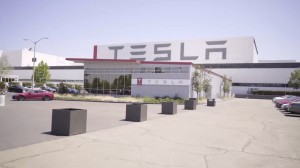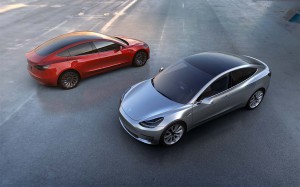Workers at the Tesla assembly plant in Fremont, California suffered injuries at a 31% higher rate than the auto industry average, according to a new study by the non-profit group Worksafe, and more serious injuries occurred almost twice as often.
The study could complicate Tesla’s challenges at its only plant – which is getting ready to start production of the critical new Model 3 battery-electric vehicle at the same time there is a push by some workers to create a local union.
For its part, Tesla confirmed it has had problems, though it insists the issue is rapidly being addressed. “We may have had some challenges in the past as we were learning how to become a car company, but what matters is the future and with the changes we’ve made. We now have the lowest injury rate in the industry by far.”
The study, produced by Worksafe – which says it is focused on worker “safety, health and justice” – was pulled together using mandatory injury data recorded by the federal Occupational Health and Safety Administration.
(Tesla wrestling with worker demands, other issues at plant. Click Here for that story.)
Tesla workers Jonathan Galescu, who obtained the company’s information, was quoted in the report saying, “We see people getting injured at the plant in the plant on a regular basis — people who do the same sorts of jobs that we do.”
According to the Worksafe analysis, the Tesla factory had an injury rate of 8.8 per 100 workers, or 31% more than the 6.7 injuries per 100 reported by the U.S. auto industry as a whole. In terms of serious injuries resulting in time off from work, restricted duty or job transfers, the injury rate was 7.9, compared to 3.9 per 100 for the industry overall.
That also indicates that the vast majority of the injuries suffered at the Fremont plant in 2015 were considered “serious.”
According to Tesla, “Our goal is to have as close to zero injuries as humanly possible and to become the safest factory in the auto industry.”
The Worksafe study shows that Tesla’s injury rate fell to 8.1 per 100 last year. But the carmaker claims it has fallen even more rapidly in recent months, dipping to 3.9 for the first quarter of 2017.
Responding to a request for comment, a Tesla spokesperson acknowledged that Tesla’s two current product lines, the Models S and X “were not designed for ease of manufacturing.” Other automakers now take into account the actual production process when developing their vehicles, including ways to reduce workers’ strain and injuries. Tesla claims it is now following a similar approach, especially with the development of future vehicles, such as the Model 3 going into production in July.
The Model 3 will be built at the same Fremont plant in the San Francisco suburbs as the Models S and X. The facility originally was built as a General Motors factory. It was later used in a joint venture between GM and Toyota. The Detroit automaker abandoned the operation as part of its 2010 bankruptcy. Toyota subsequently closed Fremont and then sold it to Tesla.
Originally designed to produce up to 250,000 vehicles annually, the pace has been markedly slower in recent years, Tesla only now approaching a pace of around 100,000 vehicles yearly. But it hopes to quintuple that by as early as 2018 due to anticipated demand for the Model 3.
Concerns about safety, the work pace and other issues has led to growing frustration on the line, according to some observers, and at least some workers have been expressing a demand for a union. The United Auto Workers Union has begun an organizing drive at the plant.
(UAW gearing up for organizing battle with Tesla. Find out more, Click Here.)
The Tesla spokesperson pointed to a company blogpost questioning whether reports of injuries at the factory are being used to promote that unionization effort. “The latest phase of their (the UAW) campaign involves a concerted and professional media push intended to raise questions about safety at Tesla.”
At the same time, Tesla acknowledged it has had injury problems at a higher-than-average rate. On the third shift, for example, Tesla cited “ergonomic improvements and increased safety awareness” for a 30% drop in overall injuries and a 52% reduction in “lost time incidents.” Overall, it said the total injury rate at the plant dipped to 4.6 per 100 workers during the first quarter of this year, or 32% better than the industry average.
Whether that downward trend holds or accelerates remains to be seen, especially as Tesla will now face the challenge of rapidly accelerating production on both its existing products and an entirely new model.
(Click Here to see what was behind Tesla’s bigger-than-expected Q1 losses.)



